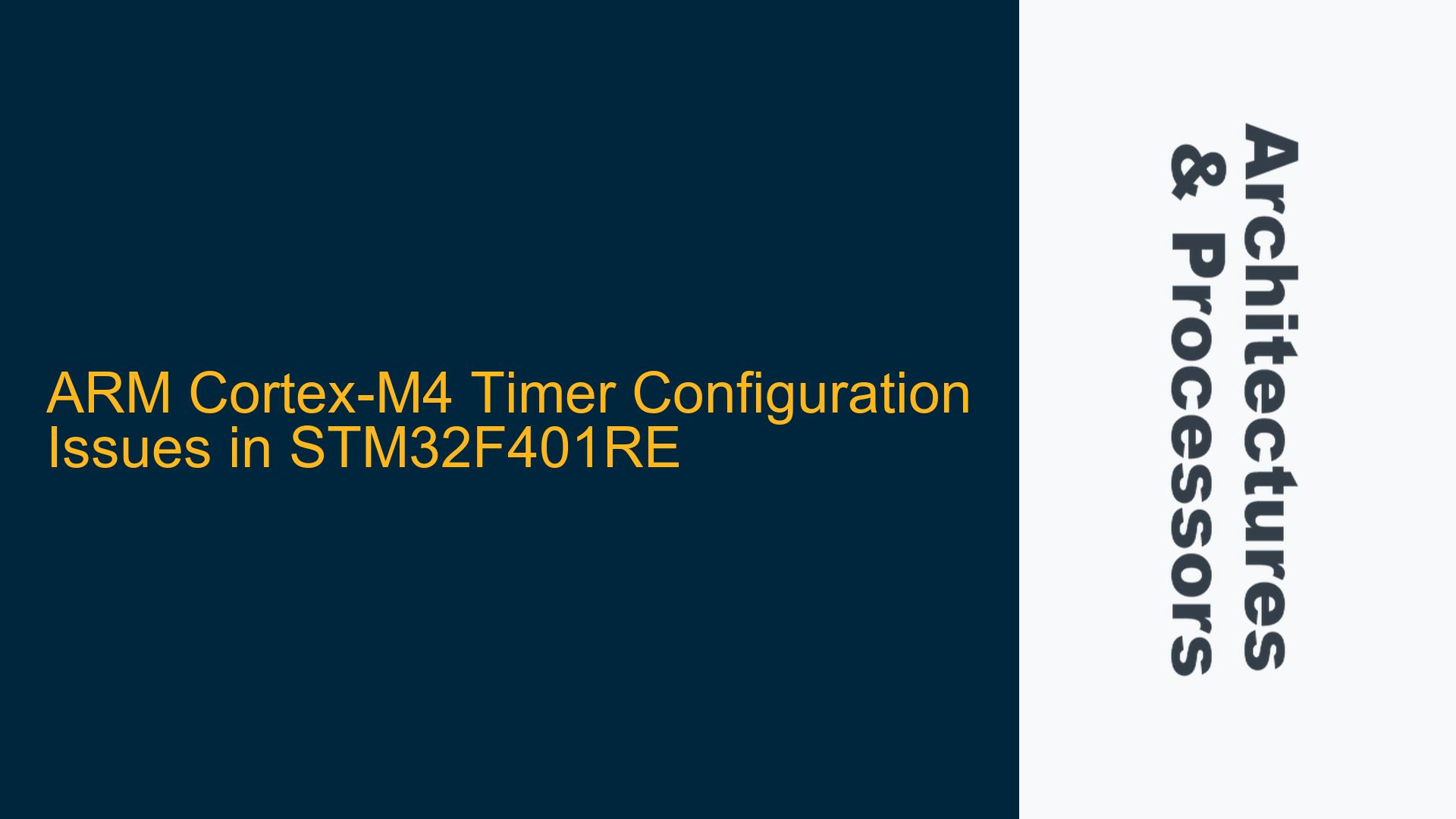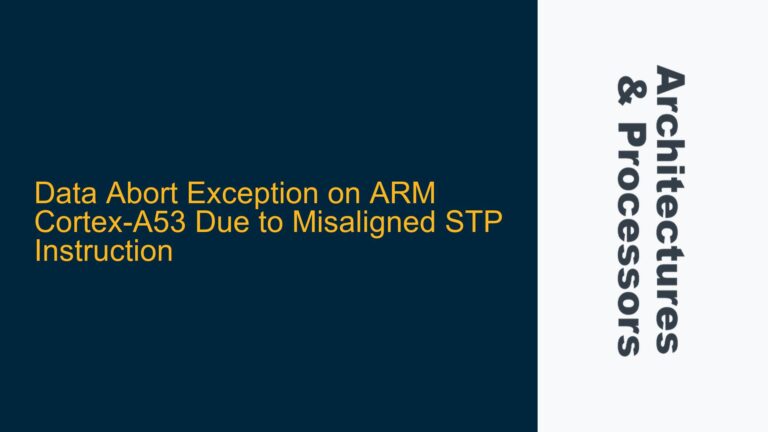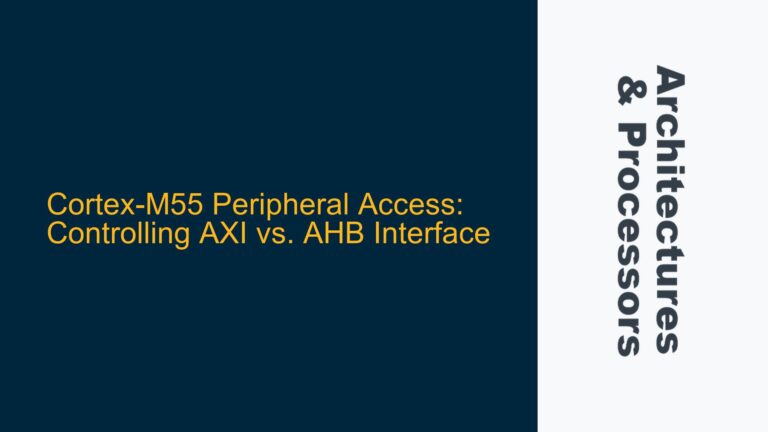Incorrect Timer Initialization and PWM Signal Generation on TIM1
The issue at hand involves the incorrect initialization of Timer 1 (TIM1) on the STM32F401RE microcontroller, which is based on the ARM Cortex-M4 architecture. The goal is to configure TIM1 to generate a 1 kHz PWM signal on channel 2 (PA9). However, the provided code fails to produce the desired PWM output. This issue is rooted in several potential misconfigurations in the timer setup, including clock enablement, GPIO configuration, and timer register settings. The problem is further compounded by the lack of proper initialization sequences and potential oversights in the timer control logic.
The STM32F401RE microcontroller relies on a complex interplay between its peripheral clocks, GPIO alternate function mappings, and timer configurations. Any misstep in this process can lead to the timer not functioning as expected. In this case, the user has attempted to configure TIM1 for PWM generation but has encountered issues that prevent the timer from operating correctly. The following sections will delve into the possible causes and provide detailed troubleshooting steps to resolve the issue.
Misconfigured GPIO Alternate Function and Timer Clock Enablement
One of the primary causes of the timer not working is the misconfiguration of the GPIO alternate function and the timer clock enablement. The STM32F401RE microcontroller requires precise configuration of its GPIO pins to function as timer outputs. Additionally, the peripheral clocks for both the GPIO port and the timer must be enabled correctly. In the provided code, while the GPIOA clock and TIM1 clock are enabled, there are potential issues with the GPIO alternate function configuration and the timer clock enablement sequence.
The GPIO alternate function configuration is critical for routing the timer output signals to the correct pin. In this case, PA9 is intended to be used as the output for TIM1 channel 2. However, the code only sets the alternate function mode for PA9 but does not specify the correct alternate function number. The STM32F401RE microcontroller uses a specific alternate function mapping for each GPIO pin, and for PA9 to function as TIM1 channel 2, the alternate function must be set to AF1.
Furthermore, the timer clock enablement sequence is crucial for ensuring that the timer peripheral is properly powered and ready for operation. The code enables the TIM1 clock using the RCC->APB2ENR register, but it does not account for potential delays required for the clock to stabilize. This can lead to the timer not being fully operational when the configuration registers are written.
Implementing Correct GPIO and Timer Configuration Sequences
To resolve the issue, a detailed and correct configuration sequence for both the GPIO and the timer must be implemented. This involves setting the correct alternate function for PA9, ensuring the timer clock is properly enabled, and configuring the timer registers in the correct order. The following steps outline the necessary actions to achieve a functional PWM signal generation on TIM1 channel 2.
First, the GPIO alternate function for PA9 must be correctly set. The GPIOA->AFR[1] register should be configured to set the alternate function for PA9 to AF1, which corresponds to TIM1 channel 2. This ensures that the timer output signal is correctly routed to the PA9 pin. The code should be modified as follows:
GPIOA->AFR[1] |= (1 << 4); // Set PA9 to AF1 (TIM1_CH2)
Next, the timer clock enablement sequence should include a delay to ensure the clock is stable before configuring the timer registers. This can be achieved by adding a dummy read operation after enabling the clock:
RCC->APB2ENR |= RCC_APB2ENR_TIM1EN; // Enable TIM1 clock
volatile uint32_t dummy = RCC->APB2ENR; // Dummy read to ensure clock is stable
The timer configuration should then proceed with setting the prescaler, auto-reload register, and capture/compare register. The prescaler (PSC) and auto-reload register (ARR) determine the frequency of the PWM signal, while the capture/compare register (CCR2) sets the duty cycle. The code should ensure that these registers are configured correctly:
TIM1->PSC = 160 - 1; // Set prescaler to 160 (16 MHz / 160 = 100 kHz)
TIM1->ARR = 100 - 1; // Set auto-reload register to 100 (100 kHz / 100 = 1 kHz)
TIM1->CCR2 = 50 - 1; // Set capture/compare register to 50 (50% duty cycle)
Finally, the timer control register (CR1) should be configured to enable the timer and start the PWM generation. The code should set the appropriate bits in the CR1 register:
TIM1->CR1 |= TIM_CR1_CEN; // Enable TIM1
By following these steps, the timer should be correctly configured to generate a 1 kHz PWM signal on TIM1 channel 2 (PA9). The key is to ensure that the GPIO alternate function, timer clock enablement, and timer register configuration are all performed in the correct sequence and with the appropriate values.
Detailed Troubleshooting and Validation of Timer Operation
To further validate the timer operation and ensure that the PWM signal is being generated correctly, additional troubleshooting steps can be taken. These steps involve verifying the clock configuration, checking the GPIO pin configuration, and using a logic analyzer or oscilloscope to observe the PWM signal.
First, the clock configuration should be verified to ensure that the system clock and peripheral clocks are set correctly. The STM32F401RE microcontroller typically operates at a system clock frequency of 16 MHz, but this can vary depending on the specific configuration. The clock configuration can be checked by reading the RCC->CFGR register and verifying that the system clock source and frequency are as expected.
Next, the GPIO pin configuration should be double-checked to ensure that PA9 is correctly set to alternate function mode and that the alternate function number is set to AF1. This can be done by reading the GPIOA->MODER and GPIOA->AFR[1] registers and verifying the bit settings.
Finally, the PWM signal can be observed using a logic analyzer or oscilloscope connected to PA9. The signal should have a frequency of 1 kHz and a duty cycle of 50%. If the signal is not as expected, the timer configuration should be revisited, and the steps outlined above should be repeated to ensure that all settings are correct.
In conclusion, the issue with the timer not working on the STM32F401RE microcontroller is primarily due to misconfigurations in the GPIO alternate function and timer clock enablement. By following the detailed troubleshooting steps and ensuring that the correct configuration sequences are implemented, the timer can be successfully configured to generate the desired PWM signal. The key is to pay close attention to the details of the GPIO and timer configuration and to validate the operation using appropriate tools and techniques.






